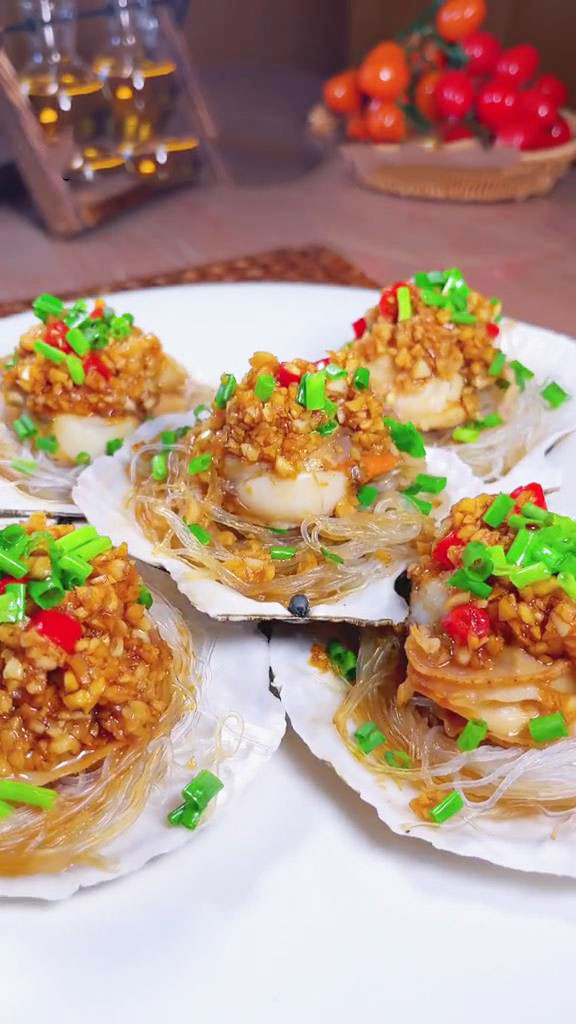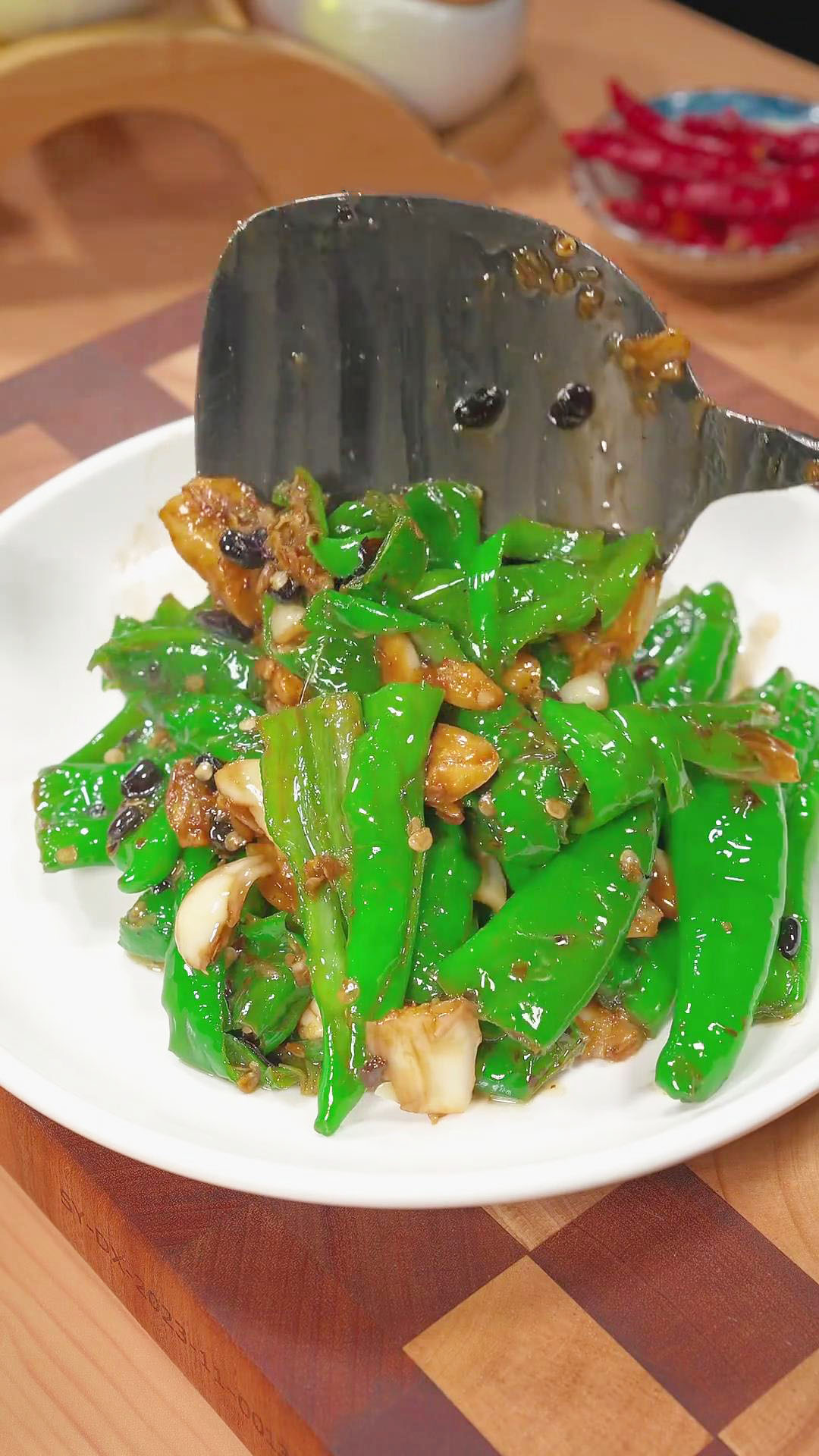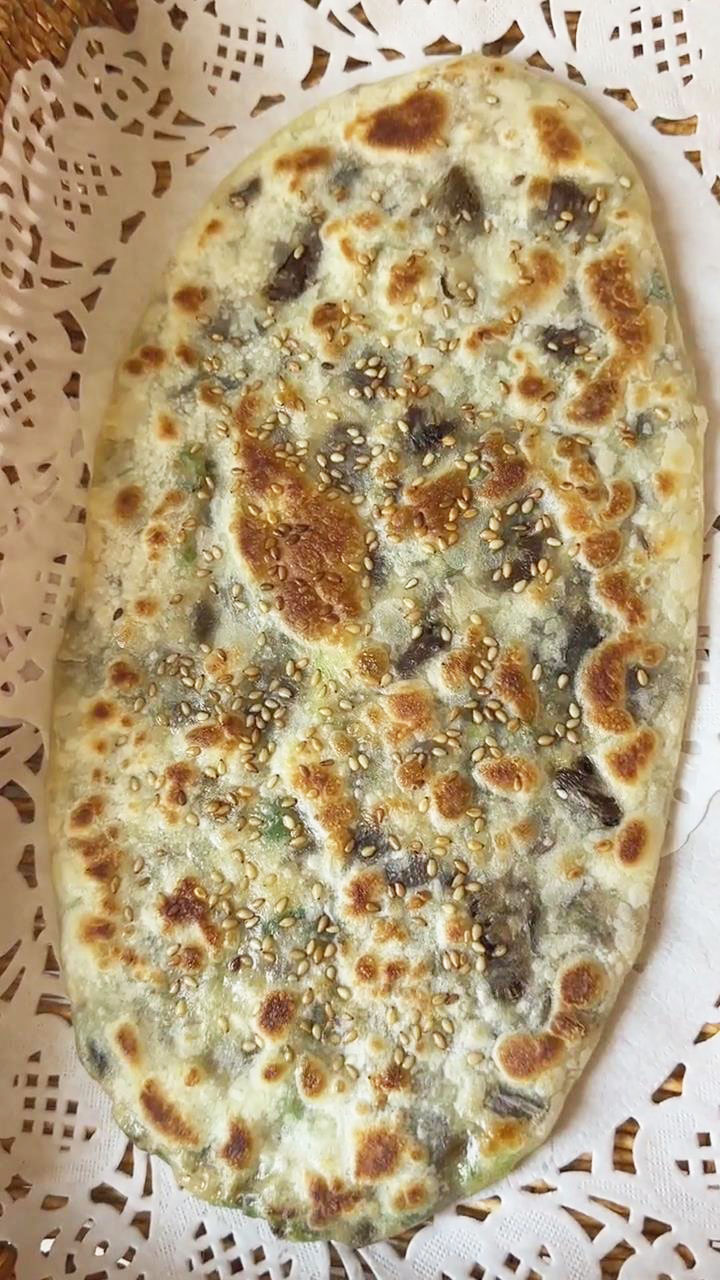This post may contain affiliate links. Please read our disclosure policy.
Kung pao shrimp is another delicious twist on the traditional kung pao chicken. You will love the contrasting textures of the tender shrimp and crunchy cashews. Of course, kung pao won‘t be complete without its classic savory, tangy, umami, and spicy sauce.
What To Know About Kung Pao Shrimp
If seafood is what you are craving, then kung pao shrimp is your quick fix. Have this as your main dish and pair it with rice or noodles.
It may require quite a list of ingredients, but once you have everything ready, stir-frying the ingredients is super fast.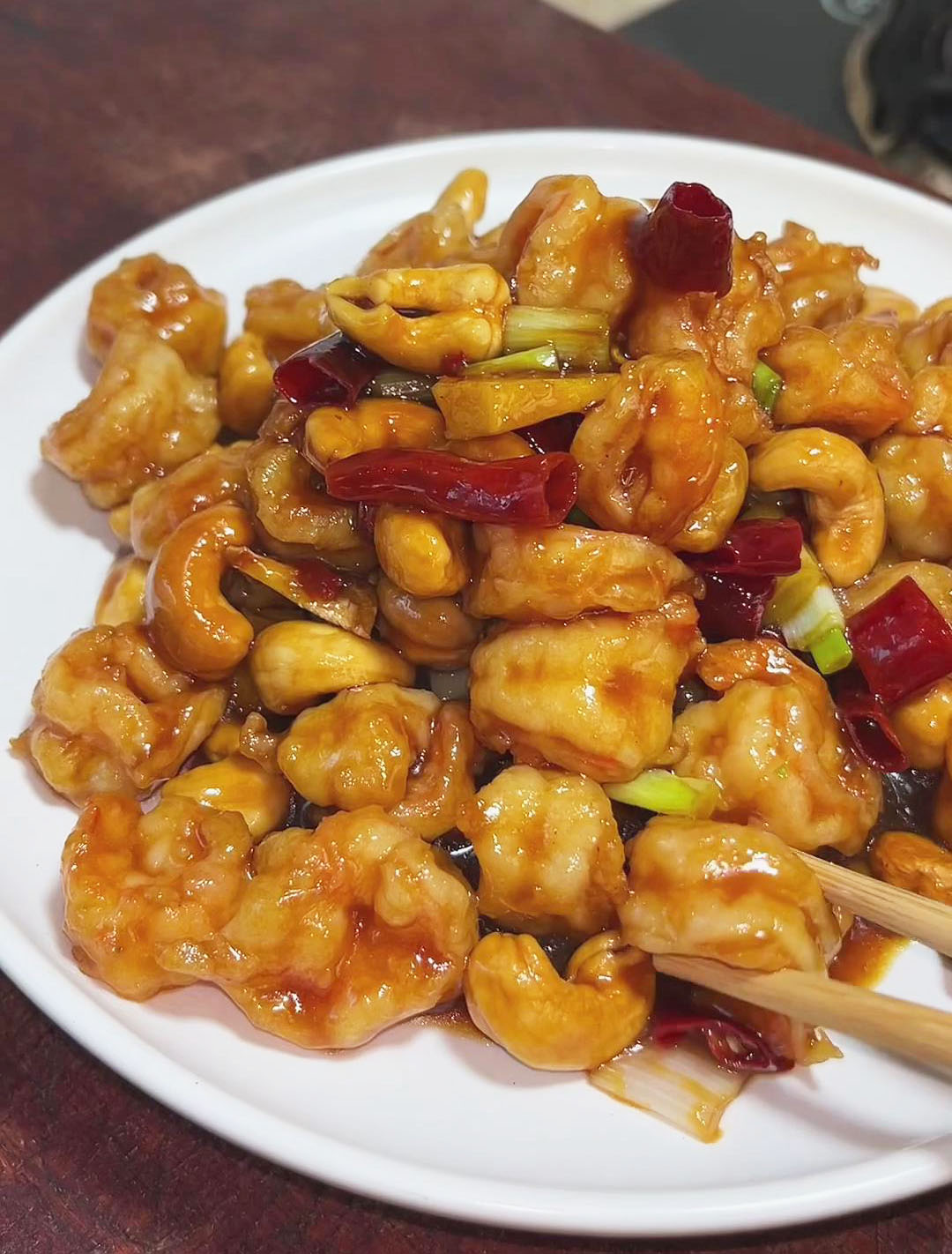
All you need to do is marinate the shrimp with cooking wine, salt, and white pepper, then coat it with cornstarch and oil.
Then, prepare the sauce ingredients, which is a mix of light soy sauce, Chinese black vinegar, sugar, oyster sauce, dark soy sauce, cornstarch, and water. Afterward, the shrimp and cashews are fried separately.
Lastly, stir-fry the aromatics and combine the sauce, fried shrimp, and cooked cashews. And you’re done! You can enjoy tender shrimp with a thick, sticky outer coating and crunchy cashews.
Got some extra shrimp needing to be put to use? Here are my top shrimp recipes worth trying:
- Shrimp Pancakes
- Shrimp Shumai
- Stir-Fried Shrimp Mei Fun
- Shrimp Congee With Leftover Rice
- Shrimp Chow Mein
- Shrimp Chow Fun
- Shrimp Wontons (Steamed Method )
- Pork And Shrimp Wonton Soup
- Salt And Pepper Shrimp
- Thai Shrimp Cakes
- Shrimp Fried Rice (Din Tai Fung Style)
Tips & Alternatives To Consider
If you want to learn more about ingredient alternatives and recommendations, continue reading this section. Whichever ingredient you decide to use, just make sure they are cut and ready before starting with the stir-frying step. Stir-frying is a quick step, so you want to avoid burning or overcooking the ingredients.
- Shrimp: Use fresh shrimp and clean it by peeling the skin, removing the tail and head, and deveining it. Then, slice the back of the shrimp lengthwise without cutting all the way through. You can use pre-peeled frozen shrimp and simply thaw it before using it. The best alternative to shrimp is prawns, which are usually larger and sweeter than shrimp. You can clean and prepare prawns the same way as shrimp.
- Shrimp marinade: The shrimp is marinated with cooking wine, salt, and white pepper powder. You can marinate it for 10 minutes or longer. After marinating, I coated the shrimp with cornstarch and oil.
- Cooking wine: This imparts a slightly sweet and briny taste. You can use Shaoxing rice wine, cooking sake, dry sherry, meat or vegetable broth, red wine vinegar, or alcohol-free wine.
- Salt: Salt brings out the flavors of the ingredients and helps the shrimp absorb them better. Use sea salt, kosher salt, or table salt.
- White pepper powder: Make it earthy with a subtle heat using white pepper powder. You can swap this with black pepper powder, but it will be more woody, piney, and hot.
- Cornstarch: After marinating the shrimp, coat it with cornstarch. The purpose of cornstarch is to give the shrimp a crisp outer layer. Moreover, the thin extra layer of cornstarch acts as a barrier that protects the shrimp from overcooking. You can swap cornstarch with tapioca or potato starch. All-purpose flour can also be used as a substitute.
- Oil: Incorporating oil into the shrimp helps keep it moist and prevents it from drying out when stir-fried. You can use a healthier type of oil, such as olive, avocado, and safflower oil. For a neutral-tasting oil, use peanut, soybean, or vegetable oil. For an earthy and nutty Asian taste, go for sesame oil.
- Sauce: To make the sauce, you will need light soy sauce, Chinese black vinegar, sugar, oyster sauce, dark soy sauce, cornstarch, and water.
- Light soy sauce: This is essential in making the sauce salty and umami. You can also use tamari, liquid aminos, coconut aminos, or gluten-free soy sauce.
- Chinese black vinegar: I highly recommend Chinese black vinegar for its unique taste. This adds a fruity, tangy, and slightly sweet taste. It is a dark-colored vinegar that you can find on Amazon, in Asian supermarkets, or in the international section of grocery stores. It is also known as Chinkiang vinegar or Zhenjiang vinegar. To replace this ingredient, you can use regular white vinegar, balsamic vinegar, date vinegar, or red wine vinegar. However, the taste will not be fruity and sweet like Chinese black vinegar.
- Sugar: You can adjust the saltiness of the sauce with sugar. Any sweetener will do, such as white sugar, cane sugar, brown sugar, maple syrup, or coconut sugar.
- Oyster sauce: In addition to light soy sauce, oyster sauce also imparts a savory, umami taste with a hint of caramel-like taste. You can substitute oyster sauce with hoisin sauce, teriyaki sauce, kecap manis, Worcestershire sauce with soy sauce and sugar, or oyster-flavored sauce.
- Dark soy sauce: I like incorporating dark soy sauce to add a bold, deep color to my dish with its thick and dark consistency. In terms of taste, dark soy sauce lends an umami but sweeter taste than light soy sauce. It is perfectly fine to omit this from the recipe if you don’t have dark soy sauce. You can try to replace it with mushroom sauce, double black soy sauce, teriyaki sauce, or more oyster sauce.
- Cornstarch: Instead of a runny sauce, I added cornstarch to make it thick and creamy. It makes the sauce stick better to the shrimp, giving it a sticky, thick coating. If you don’t have cornstarch, use tapioca flour or potato starch.
- Water: Add a bit of water to dilute the seasonings and mix them better.
- Optional flavoring ingredients: If you want to make it spicy, you can stir in chili oil or chili flakes. For a citrusy and numbing heat, add some Sichuan peppercorns.
- Aromatics: The aromatics that are stir-fried first before mixing in with the sauce are dried chili peppers, green onions, and ginger.
- Dried chili pepper:This will make the dish hot and spicy with a light crunch. Alternatively, you can use chili flakes or cayenne pepper. Remove this from the recipe if you can’t tolerate spicy flavors.
- Green onion: Stir-fried dishes won’t be complete without chopped green onions. This lends a mild onion taste to the sauce. If you don’t have green onions, use chives, shallots, white onions, yellow onions, or red onions.
- Ginger: Make it peppery and sweet with a warming kick by adding ginger. You can swap fresh ginger with ground ginger using 1/4 to 1/2 tsp ground ginger for every 1 tbsp of fresh ginger.
- Optional flavoring ingredients: To add more variety of flavor and texture, consider adding red or green bell peppers, sliced mushrooms, minced garlic, and baby corn.
- Cashews: This dish typically uses roasted peanuts. However, I changed it up a bit by using cashews. The cashews are fried in oil and are added in the last step of the recipe. Once the cashews are fried, they will become crunchy. Aside from peanuts, you can use raw or roasted peanuts. If using roasted peanuts, you don’t need to pre-fry them in the pan anymore.
Prepare These Ingredients And Kitchenware
Prepare a mixing bowl, strainer spatula, and regular spatula for stir-frying. I recommend using a wok for stir-fried dishes for several reasons. First, the slanted sides of the wok make it easier to stir and toss ingredients without spilling out.
Second, the wok’s design and material make it the best pan for maintaining and evenly distributing high heat. This helps cook the ingredients faster, an ideal aspect for stir-fried dishes.
Lastly, I love how a wok lends a smoky flavor and aroma, giving the dish that authentic “wok hei” effect. It’s particularly evident when preparing dishes like Beef Chow Fun.
If you don’t have a wok, that’s not a problem. Simply use your regular non-stick pan and cook on high heat. The ingredients to prepare are the following:
- 200 to 300g fresh shrimp
- 1 tbsp of cooking wine
- 1 tsp of salt
- 1 tsp of white pepper powder
- Sauce:
- 1 tbsp of light soy sauce
- 1 tbsp of Chinese black vinegar
- 1 tbsp of sugar
- 1 tsp of oyster sauce
- 1/2 tsp of dark soy sauce
- 1 tbsp of cornstarch
- 100ml of water
- Cornstarch (for coating)
- 1 tsp oil (for coating)
- 5 tbsp of Oil (for frying)
- 200g of cashews
- 1 tbsp of chopped dried chili pepper
- 1 tbsp of chopped green onions
- 1 tbsp of diced ginger
10 Steps To Make Kung Pao Shrimp
Basically, you need to prepare all the ingredients before starting with the stir-frying step. So, make sure the ingredients are first cleaned and chopped. Once ready, you will marinate and fry the shrimp, make the sauce, fry the cashews, and stir-fry all the ingredients.
Watch my Instagram or TikTok tutorial guide to learn more about the steps. When you are done making this recipe, snap a photo and tag me @kitchenmisadventures! I’d love to see your creations and comments, so make sure to leave a comment below as well.
- Clean the shrimp by removing the tail, head, skin, and vein. Cut along the line of the back of the shrimp. Do not cut all the way through.
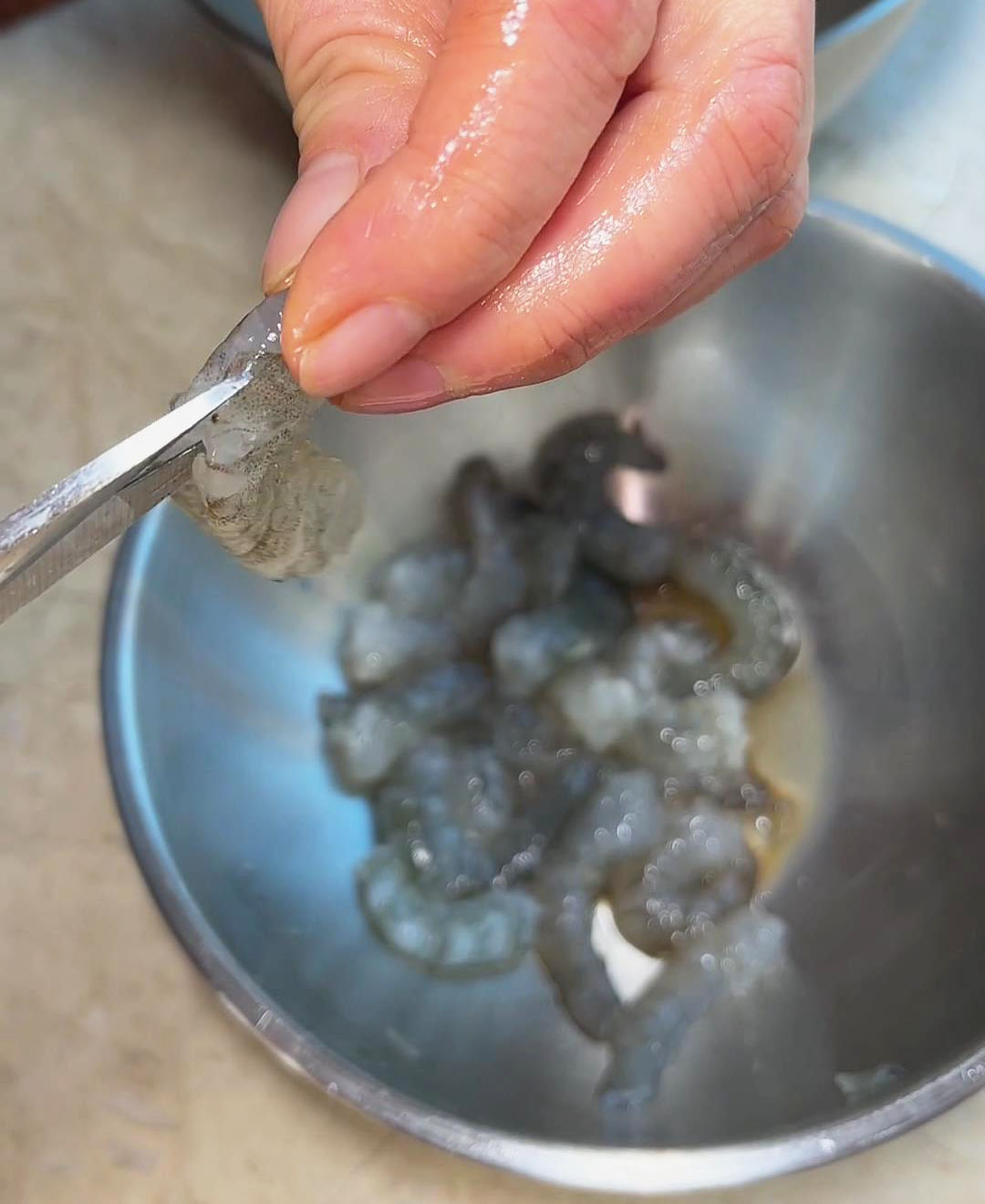
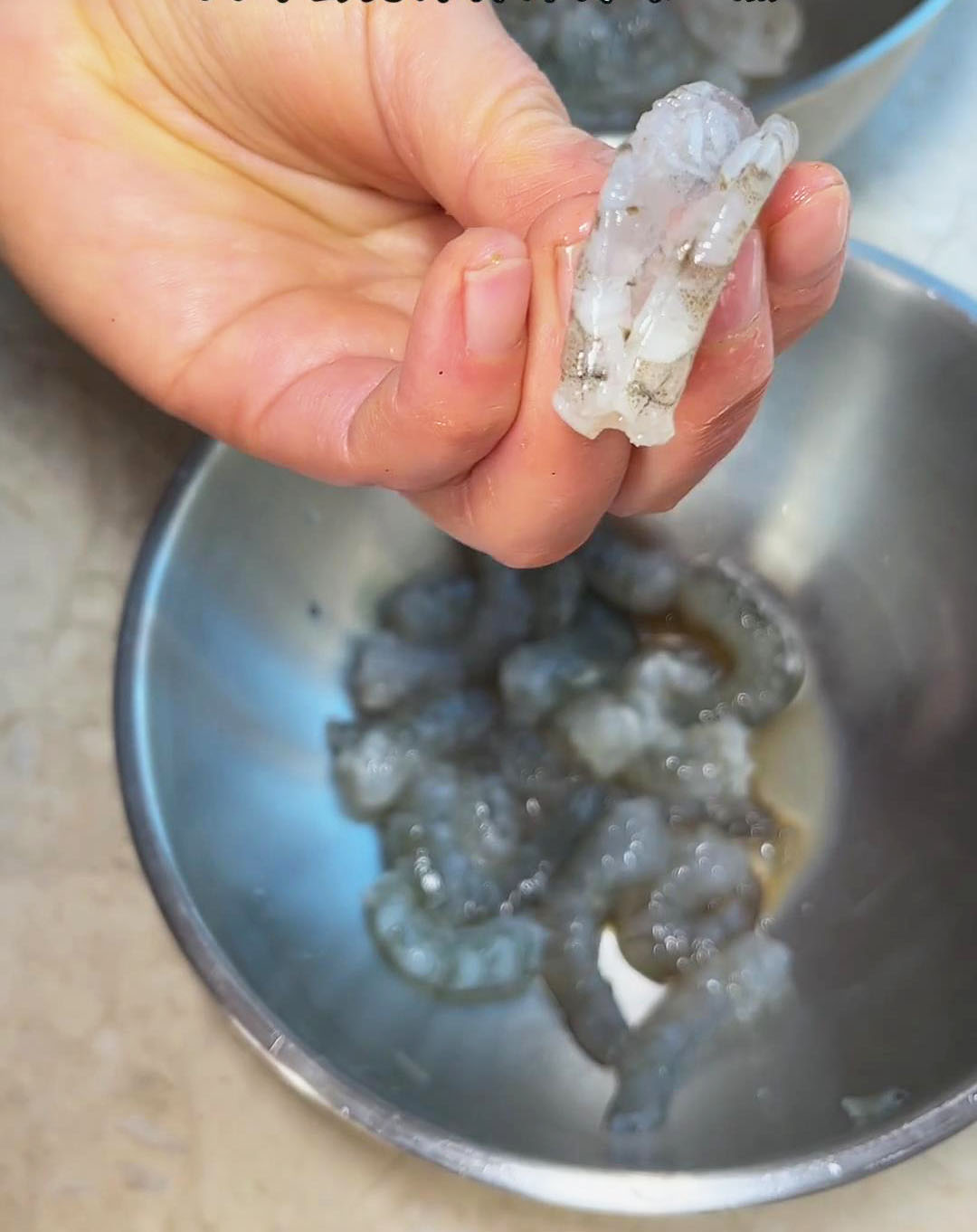
- Marinate the shrimp with cooking wine, salt, and white pepper. Let it marinate for 10 minutes or more.
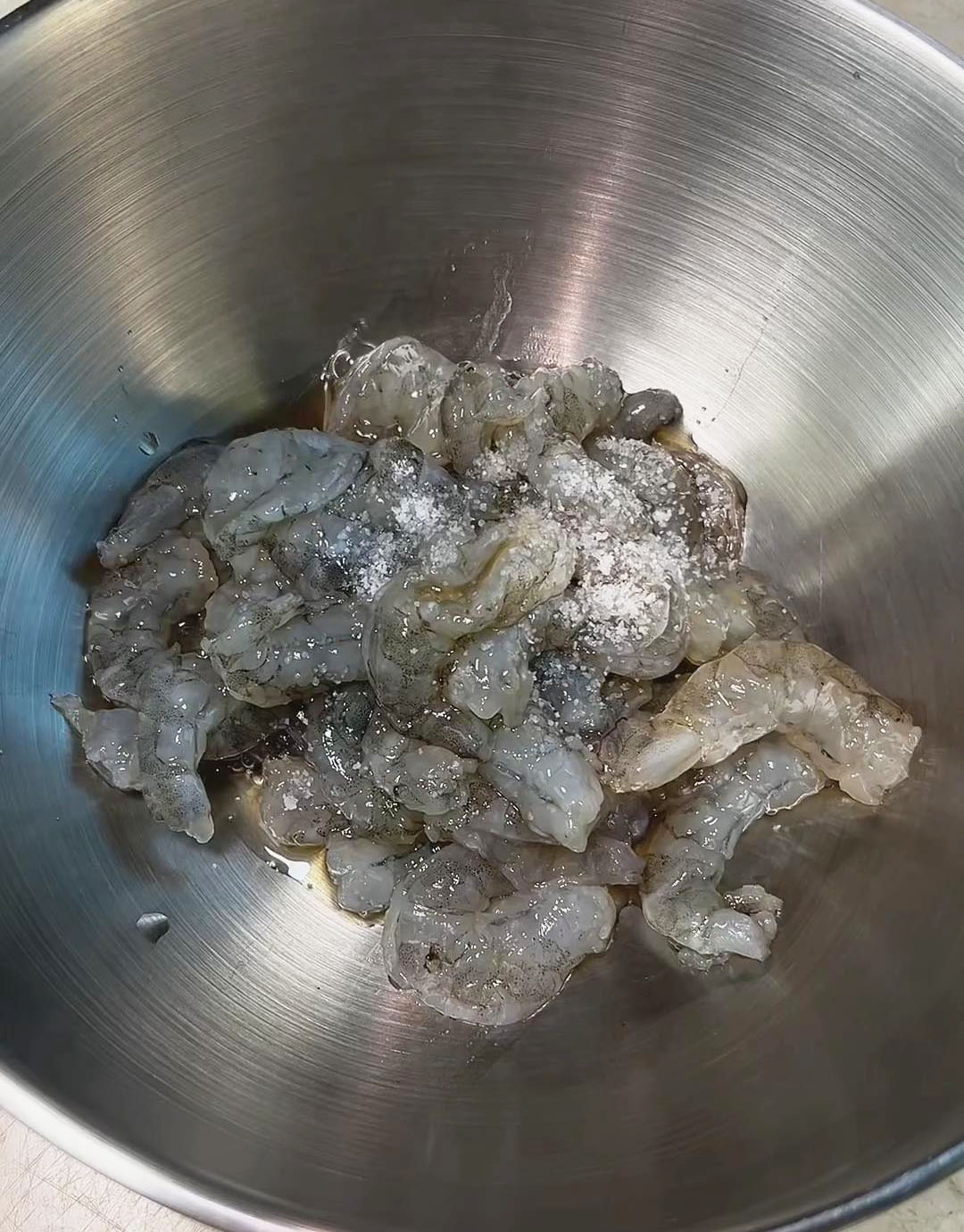
- Make the sauce with light soy sauce, Chinese black vinegar, sugar, oyster sauce, dark soy sauce, cornstarch, and water. Set aside.
- Coat the marinated shrimp with cornstarch and add a spoonful of oil to prevent sticking and keep it moist.
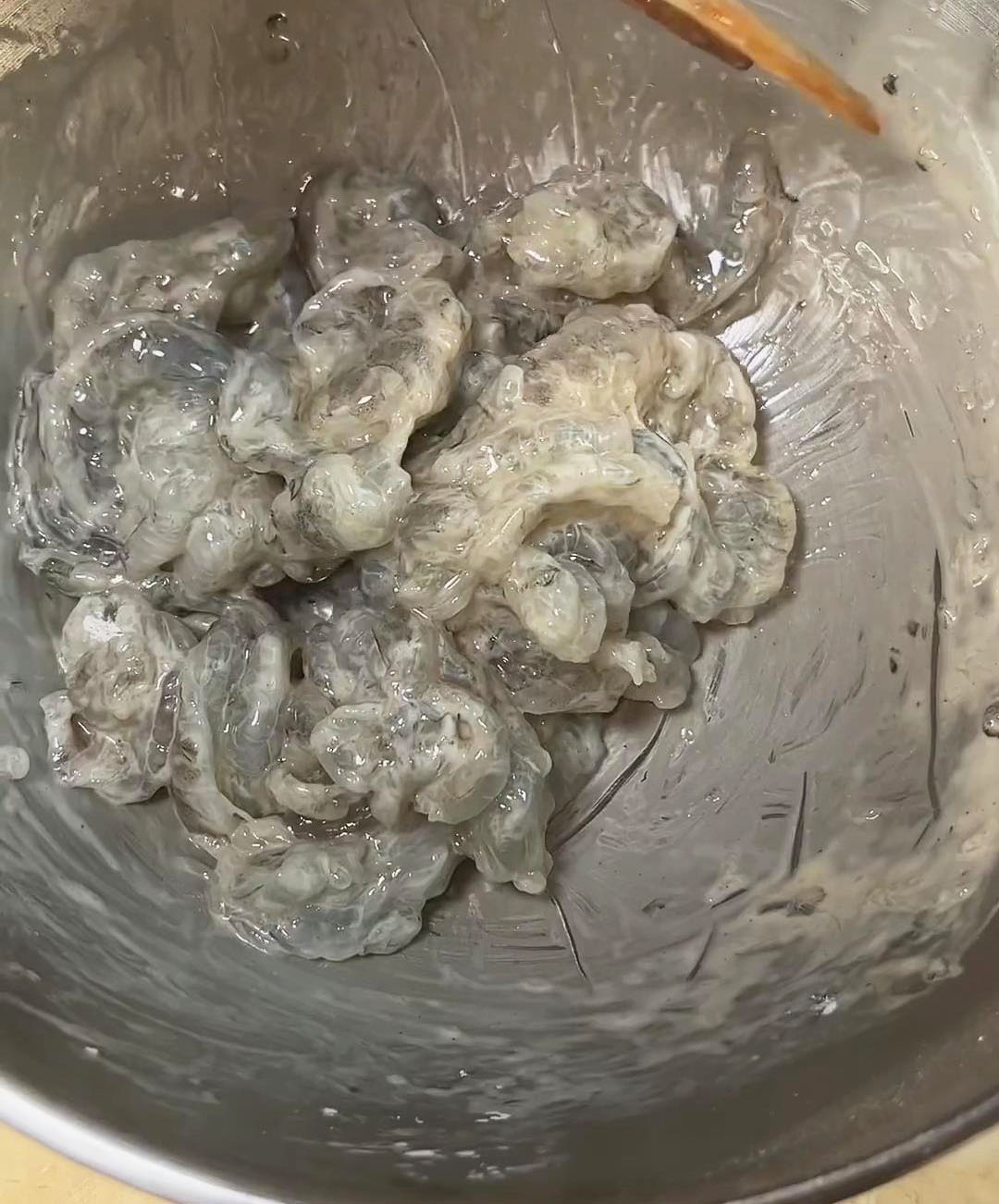
- Heat oil in the pan over medium-high heat and fry the cashews until they turn slightly darker in color. Stir continuously to prevent burning and overcooking the cashews. Remove and set aside.
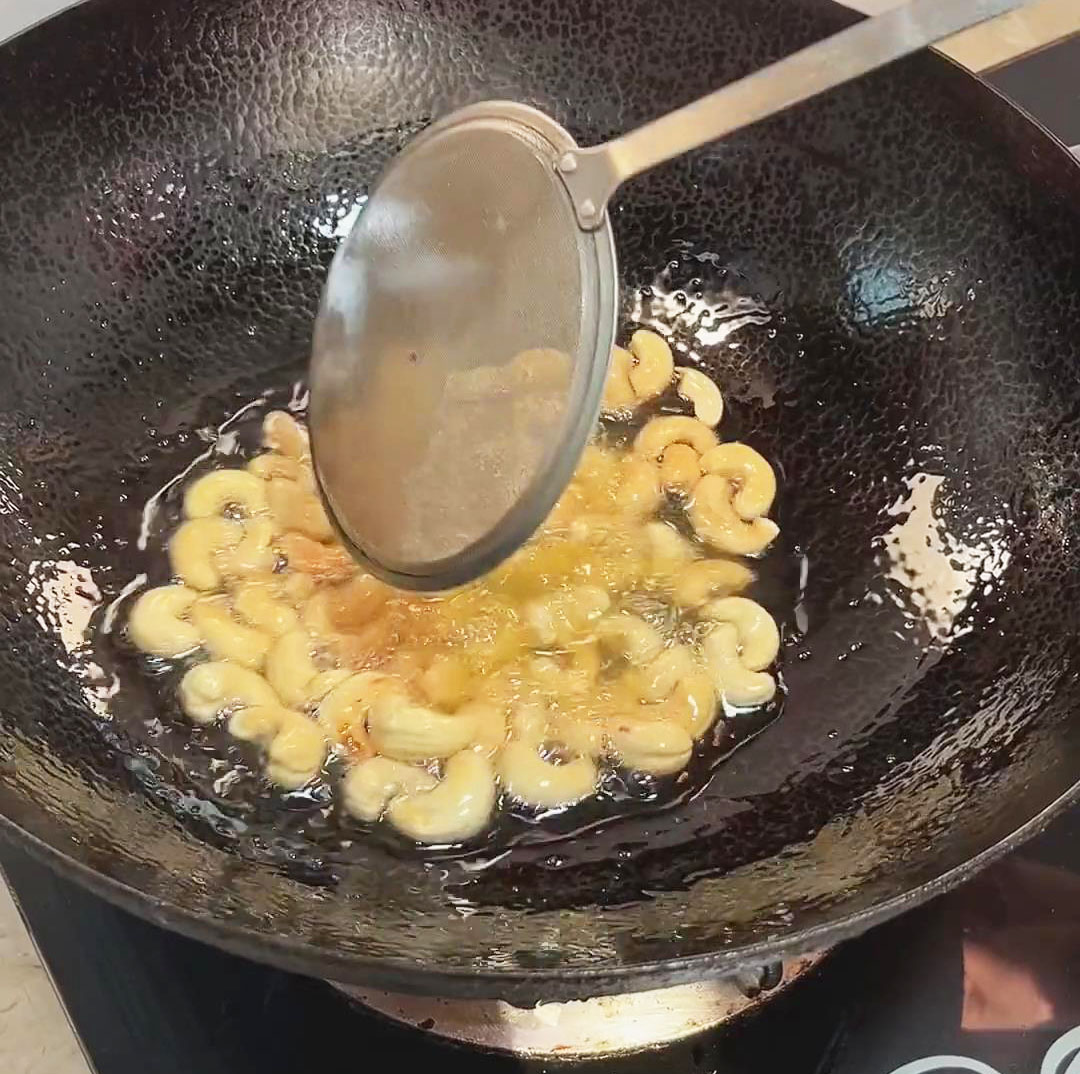
- In the same pan, fry the shrimp until it turns lightly golden and crispy.
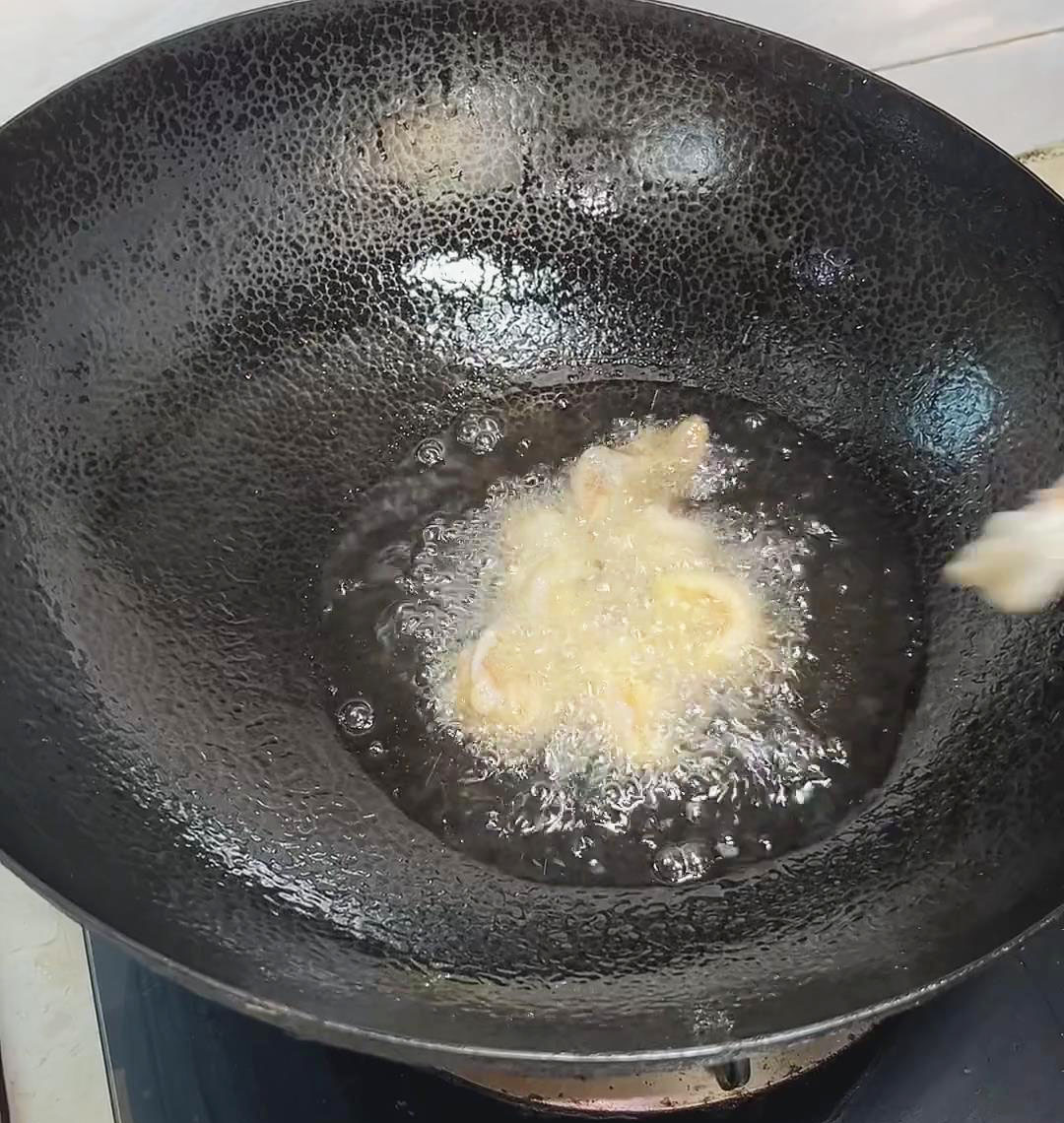
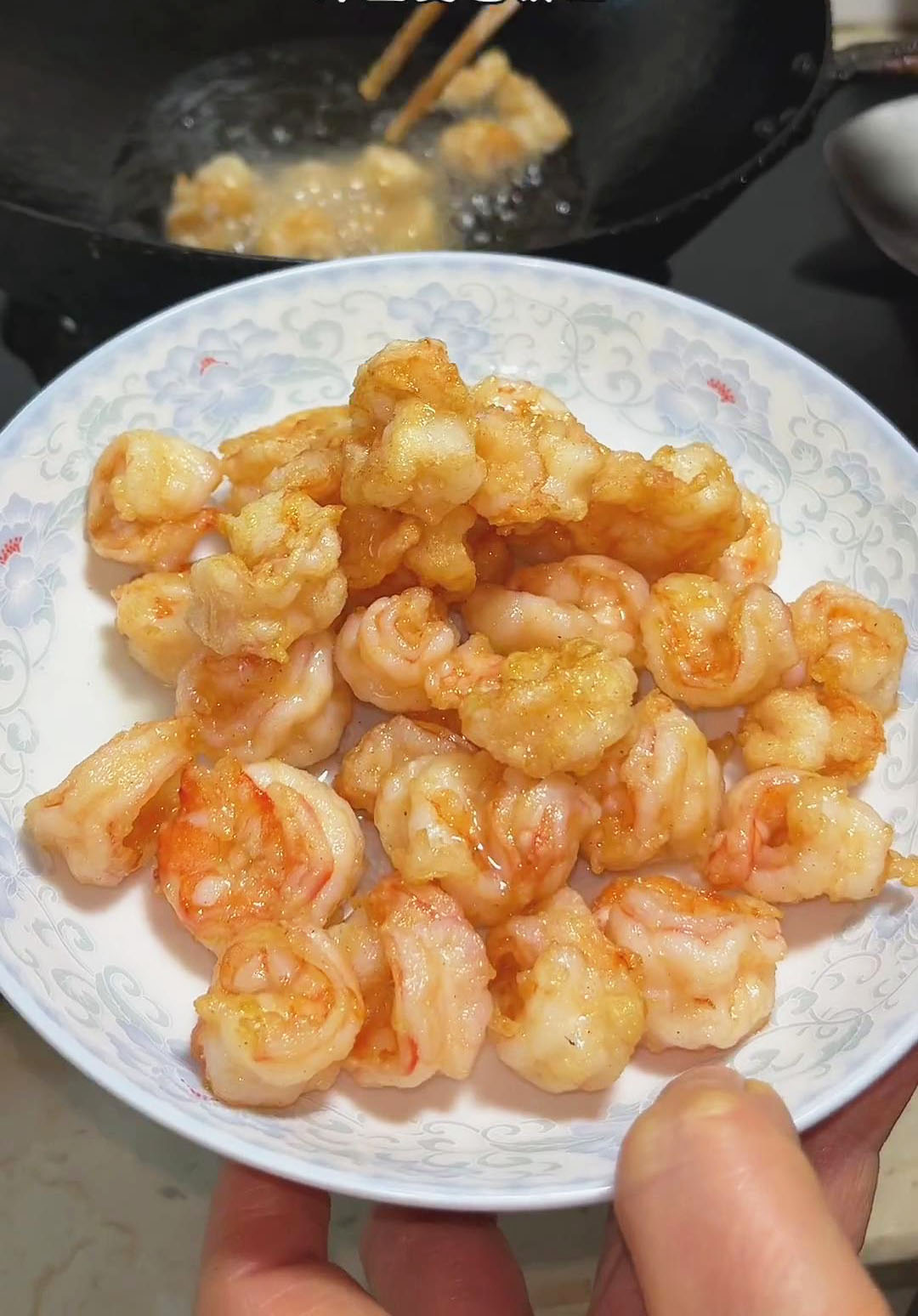
- Lessen the oil from the pan and add chopped dried chili peppers, chopped green onions, and diced ginger. Stir-fry until fragrant.
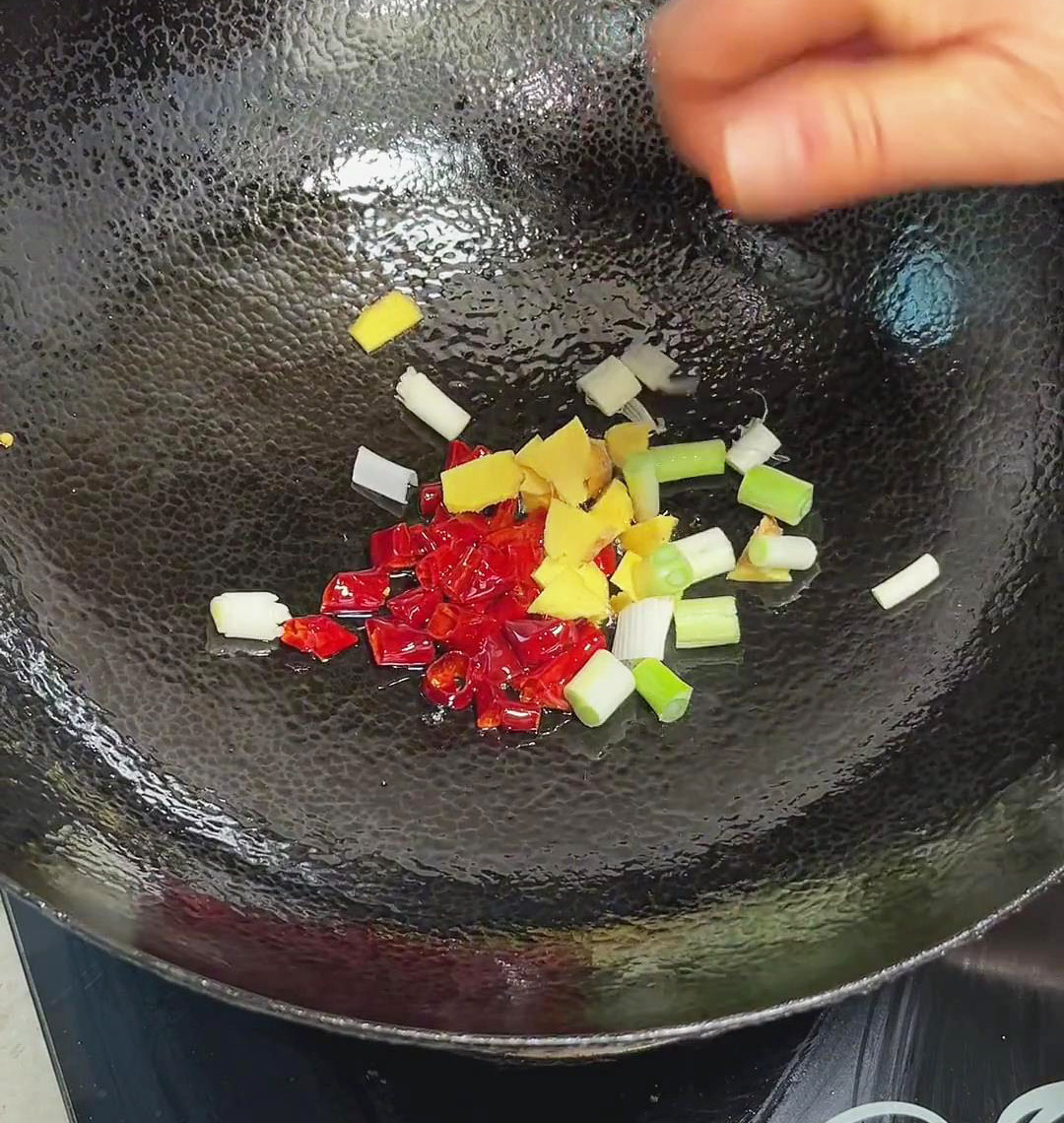
- Mix the sauce once more and add it to the pan. Cook until the sauce thickens.

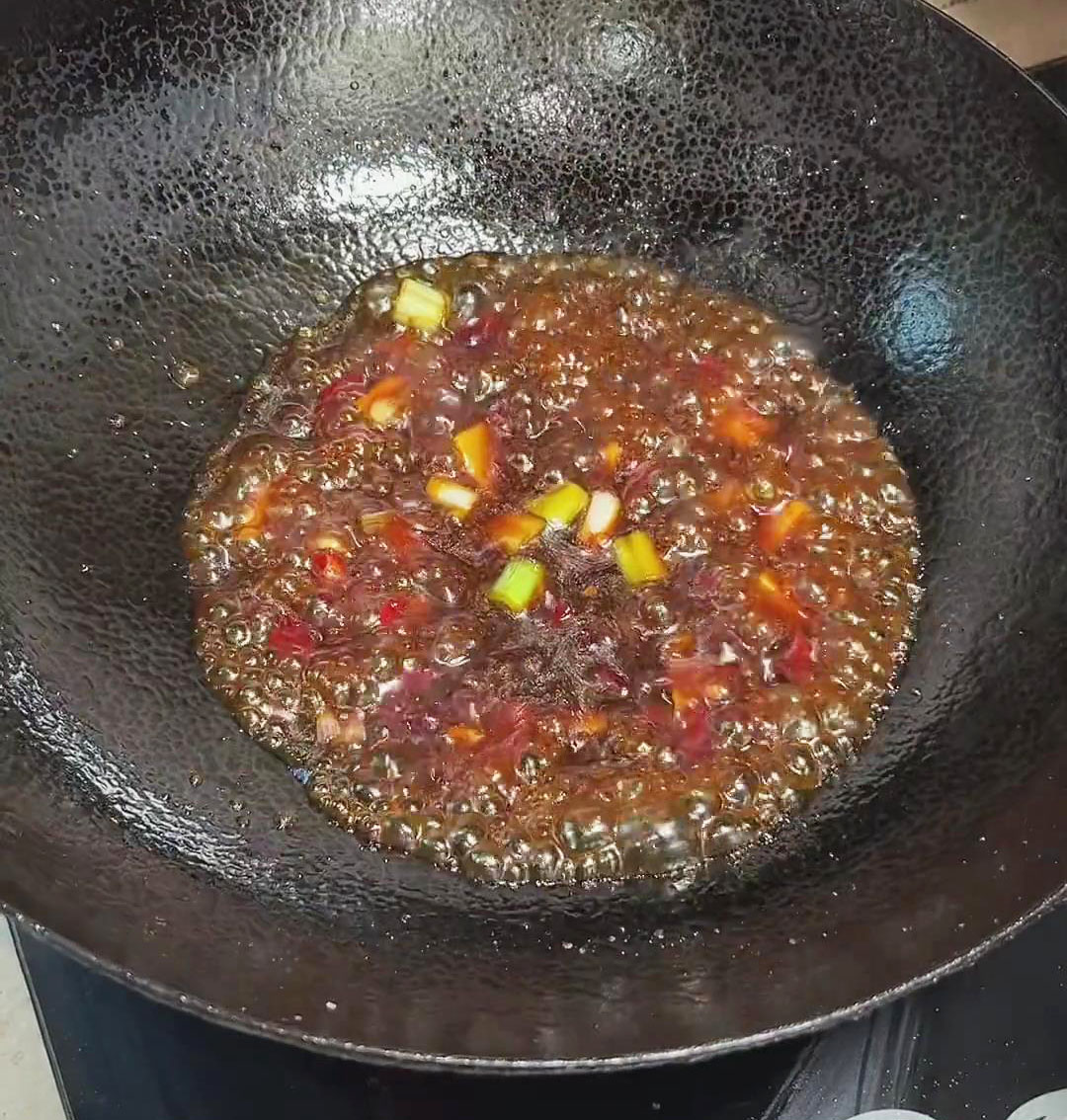
- Mix in the fried shrimp and stir-fry until evenly coated with the sauce.
- Finally, add cashew nuts and stir-fry until fully coated. Enjoy your delicious Kung Pao Shrimp! Serve it with rice or noodles and pair it with a delicious vegetable side dish.
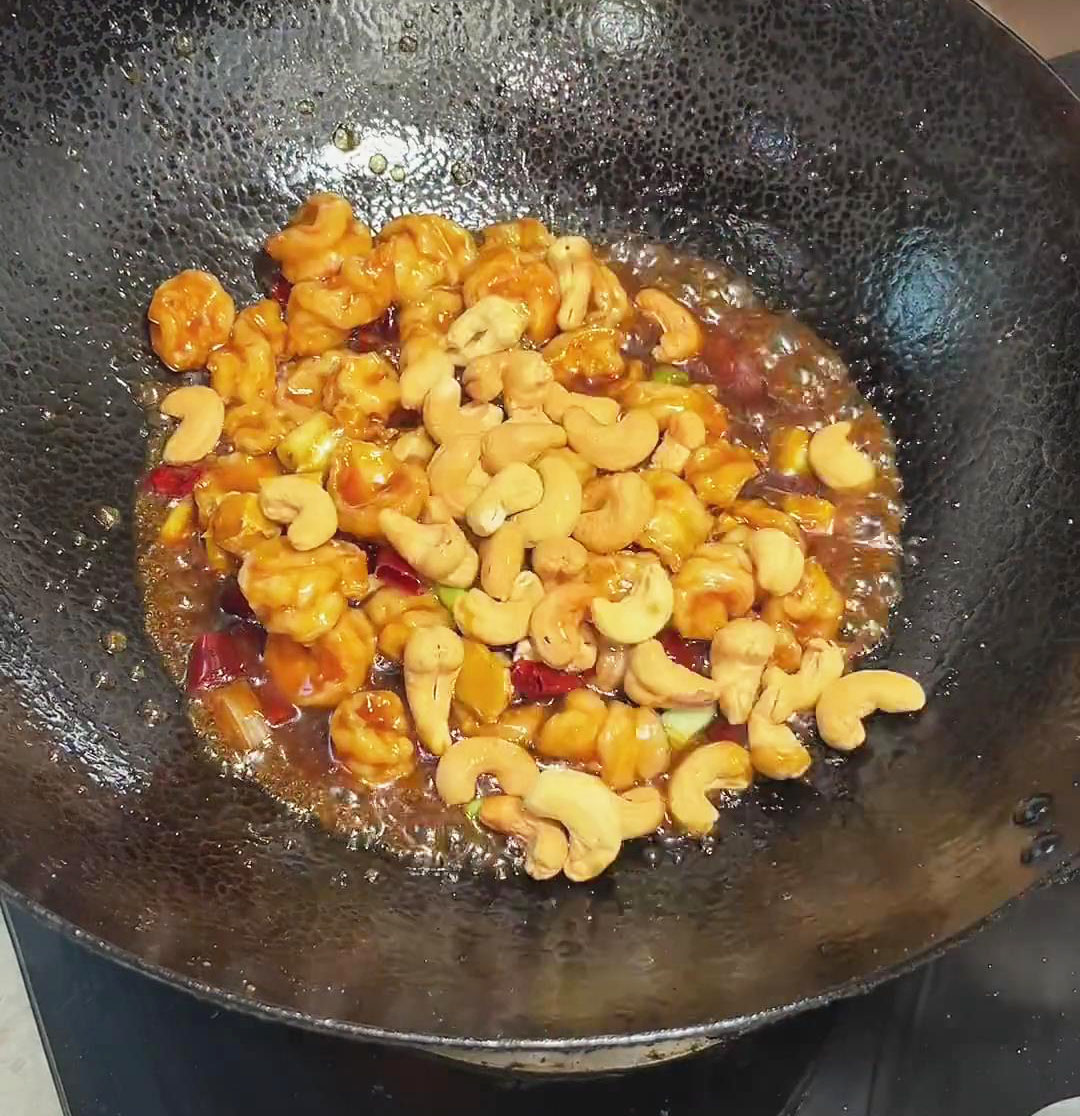
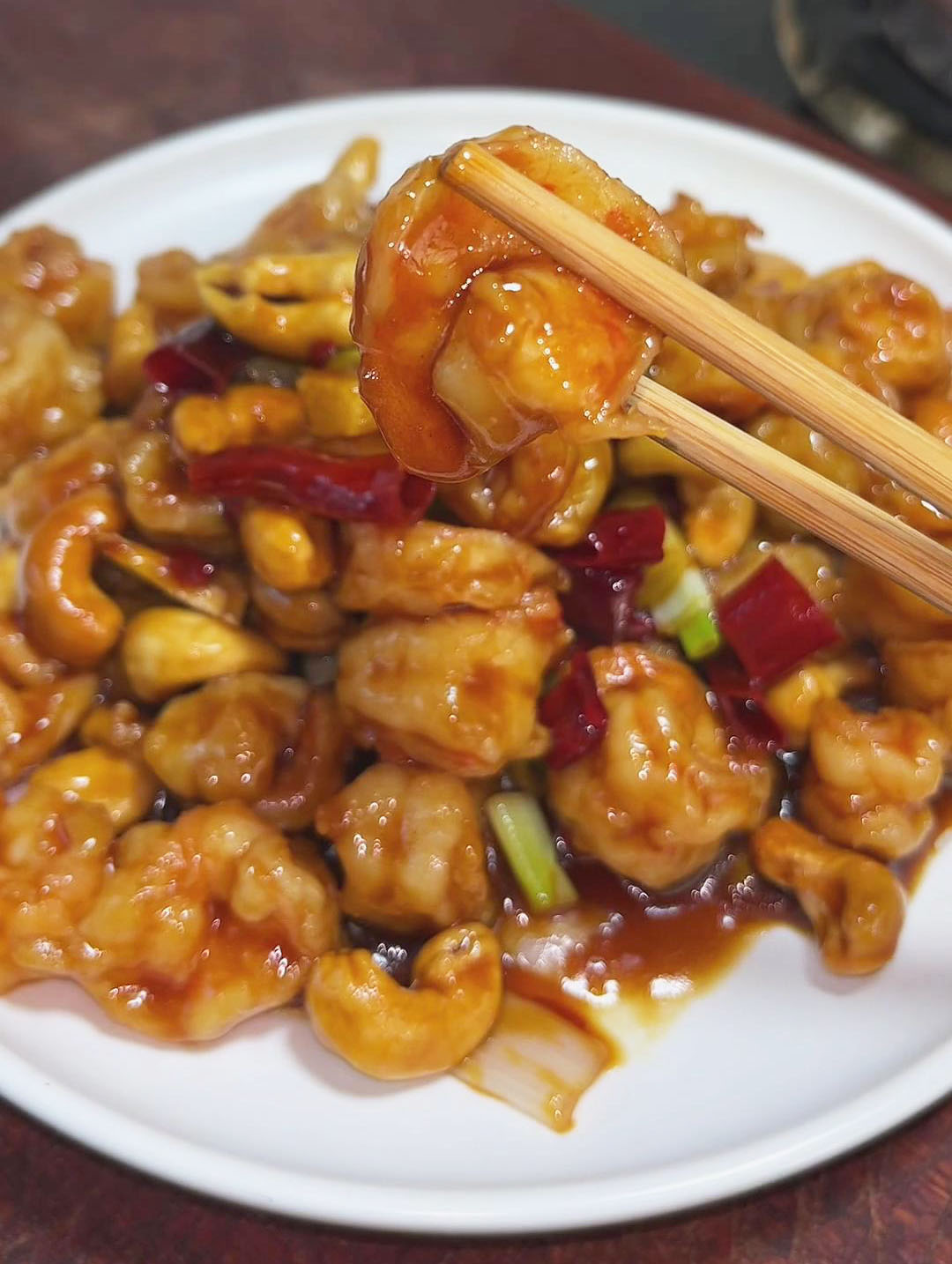
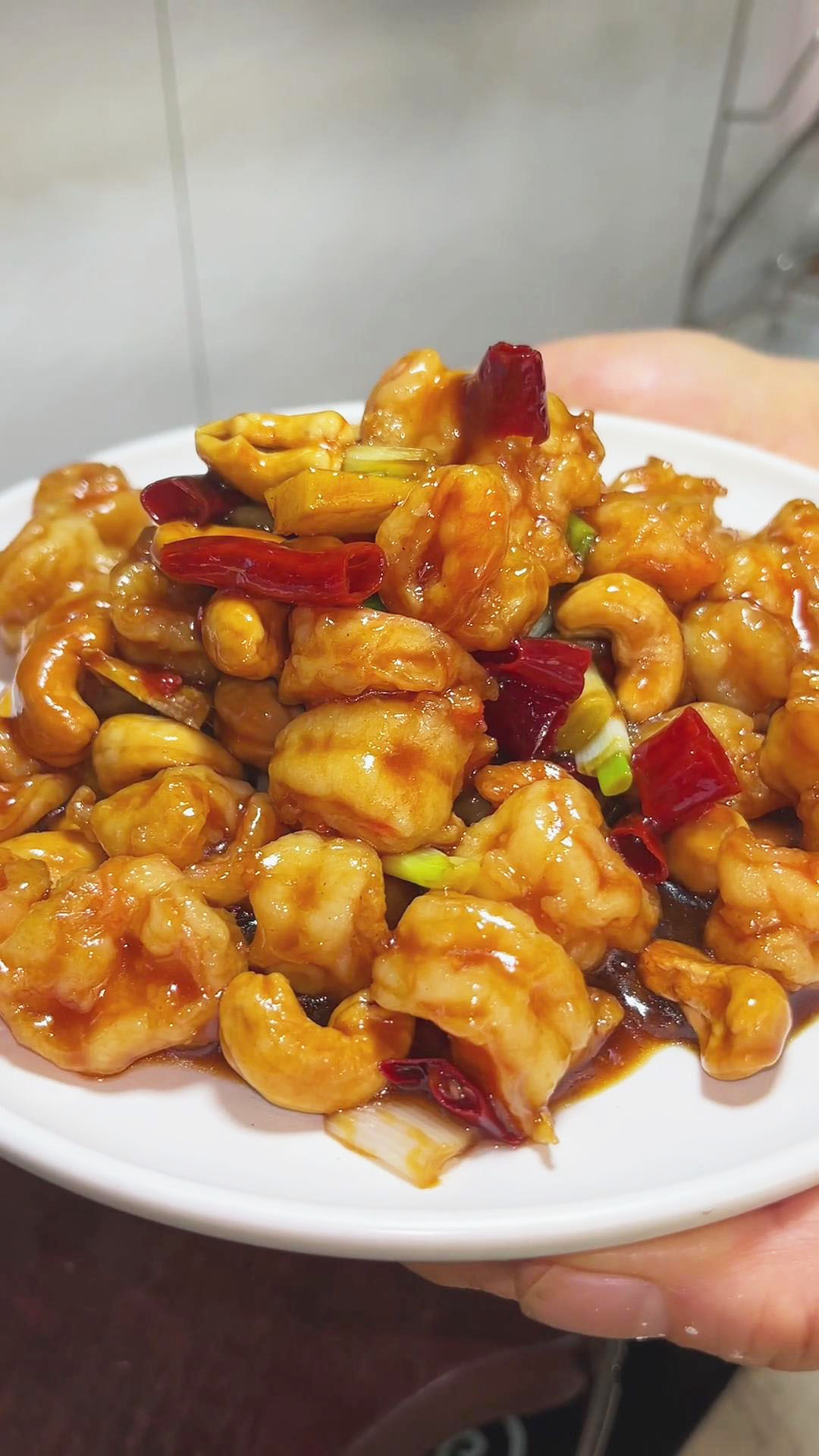
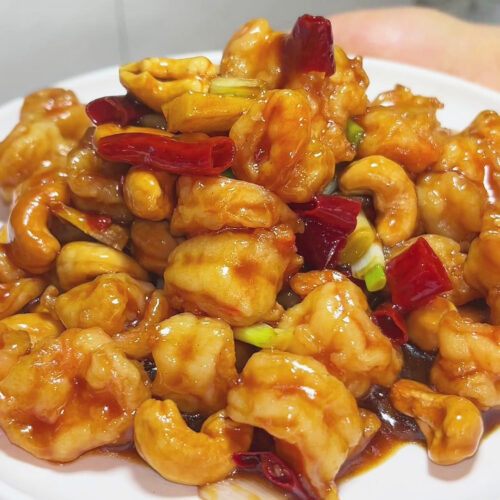
Kung Pao Shrimp Recipe
Kung pao shrimp is another delicious twist on the traditional kung pao chicken. You will love the contrasting textures of the tender shrimp and crunchy cashews. Of course, kung pao won't be complete without its classic savory, tangy, umami, and spicy sauce.Ingredients
- 200 to 300 g fresh shrimp
- 1 tbsp cooking wine
- 1 tsp salt
- 1 tsp white pepper powder
Sauce:
- 1 tbsp light soy sauce
- 1 tbsp Chinese black vinegar
- 1 tbsp sugar
- 1 tsp oyster sauce
- 1/2 tsp dark soy sauce
- 1 tbsp cornstarch
- 100 ml water
- Cornstarch for coating
- 1 tsp oil for coating
- 5 tbsp Oil for frying
- 200 g cashews
- 1 tbsp chopped dried chili pepper
- 1 tbsp chopped green onions
- 1 tbsp diced ginger
Instructions
- Clean the shrimp by removing the tail, head, skin, and vein. Cut along the line of the back of the shrimp. Do not cut all the way through.
- Marinate the shrimp with cooking wine, salt, and white pepper. Let it marinate for 10 minutes or more.
- Make the sauce with light soy sauce, Chinese black vinegar, sugar, oyster sauce, dark soy sauce, cornstarch, and water. Set aside.
- Coat the marinated shrimp with cornstarch and add a spoonful of oil to prevent sticking and keep it moist.
- Heat oil in the pan over medium-high heat and fry the cashews until they turn slightly darker in color. Stir continuously to prevent burning and overcooking the cashews. Remove and set aside.
- In the same pan, fry the shrimp until it turns lightly golden and crispy.
- Lessen the oil from the pan and add chopped dried chili peppers, chopped green onions, and diced ginger. Stir-fry until fragrant.
- Mix the sauce once more and add it to the pan. Cook until the sauce thickens.
- Mix in the fried shrimp and stir-fry until evenly coated with the sauce.
- Finally, add cashew nuts and stir-fry until fully coated. Enjoy your delicious Kung Pao Shrimp! Serve it with rice or noodles and pair it with a delicious vegetable side dish.
Video
Nutrition
Calories: 1053kcalCarbohydrates: 48gProtein: 41gFat: 82gSaturated Fat: 11gPolyunsaturated Fat: 19gMonounsaturated Fat: 47gTrans Fat: 0.2gCholesterol: 161mgSodium: 1971mgPotassium: 1112mgFiber: 6gSugar: 15gVitamin A: 1988IUVitamin C: 4mgCalcium: 114mgIron: 8mgTried this recipe?Let us know how it was!

